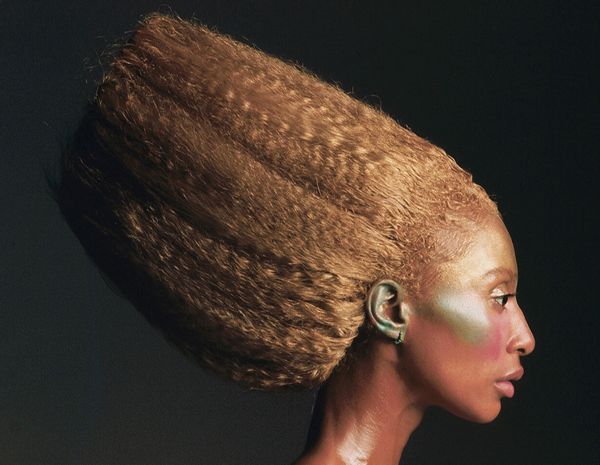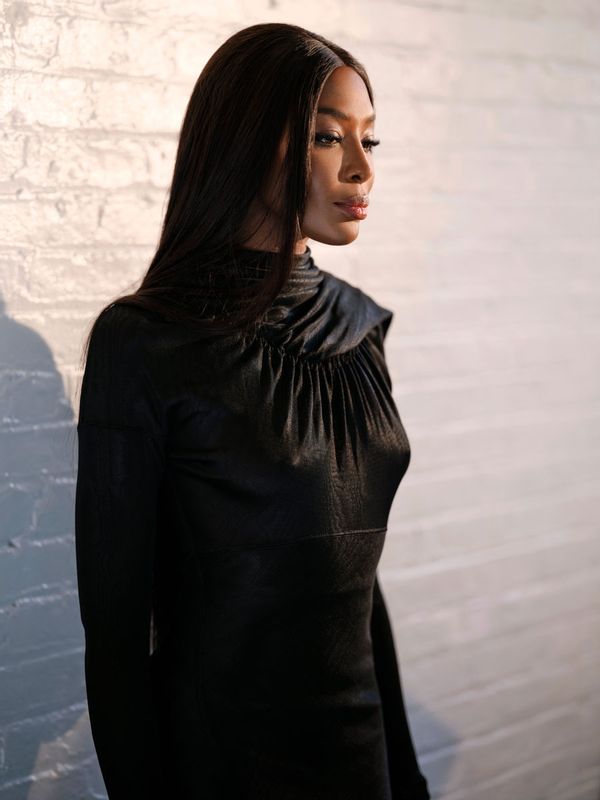
The supermodel's artistic medium is assumption – reflecting it, shaping and defying it. They take on characters and tell stories without using dialogue, or leave enough room in their expressions for the beholder to project personalities on them.
Washington Post columnist Robin Givhan reminds us at the beginning of "The Super Models" that before the era when fashion was defined by four major names – Naomi Campbell, Linda Evangelista, Cindy Crawford and Christy Turlington – models were the equivalent of hangers. They were called mannequins, and with a few exceptions, nobody knew their names or what they thought.
Directors Roger Ross Williams and Larissa Bills posit that this quartet changed that by recognizing their bankability and riding a wave of pop cultural transformation facilitated by emergence of cable TV. Through Elsa Klensch's fashion coverage on CNN and the rise of MTV, New York culture invaded Middle America, making models among the first major influencers.
This is presented with the greatest clarity midway through "The Super Models," when the series stops being about the origin stories of four individual women and connects them to the collision of mass media and high art. In this era of new superstars being born, including Madonna and RuPaul, why wouldn't the fashion seek to participate in and define it?
But this gets ahead of what "The Super Models" sells above all, which is a sense of shared memory of a time and a theory that these women represent power. The filmmakers establish that minutes into the first episode with archival footage of Dick Cavett marveling to modeling magnate Eileen Ford, "not a very feminine word, but let's face it: you are powerful."
Years later Naomi, Linda, Cindy and Christy became familiar enough to Generation X for the average person to refer to them on a first-name basis – which, to hear Crawford and Turlington talk about it, is intentional. Crawford, who parlayed her editorial success into hosting MTV's "House of Style," talks about eschewing the haute couture world to court a larger audience through advertising for national brands like Pepsi and agreeing to pose for Playboy — only if she were shot by Herb Ritts.

Evangelista and Campbell, meanwhile, had to battle for every victory they gained – the former having to fight her way out of an abusive marriage to Gérald Marie, the head of the Elite modeling agency in Paris, and the latter contending with the racism few in the industry dared question. Campbell also expresses gratitude for the sense of protection granted to her by certain designers she refers to as her chosen family, like Gianni Versace and Azzedine Alaïa, whom she lovingly calls "my papa."
All told, this is a great fall for fashion worshippers. In addition to "The Super Models," HBO recently debuted the ethereal "Donyale Luna: Supermodel," a swim through the biography of the first Black model to appear on the cover of Harper's Bazaar in 1965, by way of a sketch artist, and British Vogue in 1966. Her prominent role in fashion history has largely been blotted out.
Between this and Frédéric Tcheng's "Invisible Beauty" in theaters, we have a well-rounded cinematic tour through Western style from the 1960s onward. To watch either of those documentaries is to see how incompletely "The Super Models" develops the overall picture.
Even so, it does a bang-up job of showcasing these women's lives and personalities through the work of seminal photographers such as Arthur Elgort, Richard Avedon and Steven Meisel, whose lens heavily defines the series' tone. Regardless of the criticisms concerning its execution, you cannot claim that this show isn't gorgeous.
The lensmen set the mood for each hour's walk through the foursome's claimed history of influencing culture by elevating certain designers. Isaac Mizrahi, Todd Oldham, Marc Jacobs and Anna Sui were all up-and-comers whose shows Campbell, Turlington, Evangelista and Crawford walked in as a favor at a time when their rates were among the highest in the industry.
We know these names because their designs have been made available to us through Target and other big box retailers eager to make runway fashion accessible to everyone. "The Super Models" proposes that without these four models towing them along in the current they created, perhaps we wouldn't.
However, the filmmakers' assumption that the audience knows these women also informs the series' slightness in some areas, especially throughout the first two episodes. Williams and Bills emphasize each woman's personal history in the opening act, which is understandable.
Inserting their origin stories into the longer history of the modeling industry is where "The Super Models" falters. Frustratingly, this happens at the top of its runway.
Crawford, Campbell, Evangelista and Turlington rose to the pinnacle of high fashion into the late-'80s and the '90s, two socially and economically disparate eras whose differences are mainly explained by grunge confusing the social order.
However, the level of specificity with which the filmmakers connect societal transformation and the couture industry after the models' fame peaked is nearly absent in the explanation of how they achieved a level of prominence prior generations of models did not. One glaring example concerns its usage of Bethann Hardison, the main subject of "Invisible Beauty" who put Black models on the map, presented here as simply another expert on how impactful Campbell, Turlington, Crawford and Evangelista are and continue to be.
Another is a scene where Crawford says that suddenly the print girls – as in, she and the others – were doing runway shows, and an expert explains that brought these inert two-dimensional goddesses into the real world. This is presented with little insight into the forces that made that happen or why there was a delineation between print and runway in the first place. Or, for that matter, the economic and cultural conditions in the '80s that made the culture ripe to be conquered by these four particular women.
Sometimes the most generous favor a documentary can do for its audience is to explain the circumstances that enable a phenomenon not simply to occur but to take root and last.

Luna was one of Andy Warhol's muses, appeared in films by Salvador Dali and Federico Fellini, dated one of the Rolling Stones and for a time was one of the most sought-after women in London and Paris. "I know I'm beautiful. I know I'm the best model. So why aren't I being photographed?" she wrote in the journal that gives her a presence in the film, read by her daughter Dream Cazzaniga, an executive producer.
The answer to all of it rested in the America she left behind – the place where the racially ambiguous Donyale Luna sprung from the imagination of an awkward Black girl from Detroit named Peggy Ann Freeman. Luna's career peaked during the height of the Civil Rights movement, a time when she was quoted as wishing she were white and refused to claim any ethnic or cultural identity.
All the great photographers recognized her rare beauty, including Avedon, who, in an archived exchange he had with then-Vogue editor Diana Vreeland, told the editor that Luna was "extraordinary. "And she said, 'So was King Kong.'"
The American fashion world would not claim her, so who would?
Jefferson reads that passage out loud to Beverly Johnson, one of the supermodels to arrive on the scene in Donyale's wake and, for many years, the woman Vogue claimed as the first Black model to grace its cover. (She was the first on the American edition.) The camera stays with Johnson as she processes hearing that, nods knowingly, and is reduced to tears. "It's not fair. . . I'm not a cryer . . . I'm not a cryer. . ." she says between pauses to weep. "It's an accumulation of all the pain . . . .all the ancestors, all . . . it's why it hurts so bad."
"The Super Models" never moves the viewer this way. Maybe our collective knowledge about its subjects makes such emotional epiphanies impossible to achieve. Thus, since so many of us grew up bombarded by images of these women and coverage of their lives, the filmmakers assume – yes, we're bringing it back – that knowing the broadest strokes about their careers is enough.
Regarding the details that we don't know, including the sexual assaults Marie is alleged to have committed, Evangelista uses this forum to speak up about his physical abuse during their marriage and reiterate her sorrow at hearing his accusers' accounts, including that of fellow model Carré Otis.

Black women have spoken up about this recently but in Campbell's career heyday, she had few shields from the tabloids' mudslinging. Seeing all the ways Campbell thrives despite this is especially rewarding. Its emotional match may be Evangelista's determination to reclaim her career after surviving a financially devastating divorce, recurrences of cancer and permanent disfigurement related to a cosmetic procedure.
Through these passages, we may not necessarily feel we know these women much better than before, but at least "The Super Models" dissolves some of the illusion separating them from the rest of us. Cameras once made them divine. It's appropriate that one would remind us that they're human.
"The Super Models" is streaming on Apple TV+. "Donyale Luna: Supermodel" is streaming on Max.







